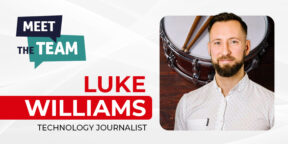Content is king in the digital world and the key to attracting or converting any audience. The right “media” helps businesses boost brand awareness, earn customers’ loyalty, and even improve their reputation online. However, there’s more than one type of content to consider.
A company pays for some forms of media to generate specific results, like PPC campaigns or promotional pieces on guest blogs. Other content types are earned by something a company does, for instance, a press release about a recent business achievement.
Today, we will look at some of the most important forms of “media” for any content marketing plan: paid media and earned media.
What is Earned Media? An Introduction
Earned media is any content related to a brand by another third party or company without a transaction. For instance, paying an influencer to share information about a new product on social media would be “paid media”. However, if the influencer saw the development and decided to review it of their own accord, this would be “earned media”.
Earned media can come in many different forms, such as:
- Non-paid news features on industry publications
- Product features or reviews from bloggers or influencers
- Social media mentions or user-generated content
Most forms of earned media are also types of “word of mouth” marketing. They help generate attention for a business without that company investing in its content creation.
This form of media is valuable because it increases the business’s credibility, heightens brand awareness, and generates trust. 92% of people trust “recommendations” from people they value over other types of marketing collateral. However, earned media is often difficult to generate and takes significant work and strategy on behalf of the business.
The most significant pros and cons of earned media include:
Pros:
- Improved credibility for the brand if the press comes from reputable sources
- Heightened brand awareness and increased brand reach
- It’s not a pay-to-play model, therefore it’s widely considered low cost
- From an audience perspective, its the most authentic type of coverage
Cons:
- It’s highly competitive and therefore you need a stand-out story
- No coverage is guaranteed
- There’s often no regularity to your coverage
- Journalistic integrity rules – reporters can write what they like (within reason)
- You rarely get a backlink or any branding. Sales messages are often removed
What is Paid Media?
So, what is paid media? Paid media is a far more common form of content for many business leaders, as it’s much easier to access than earned media. This content refers to any media which is executed to promote the business at a price. The most common type online is known as ‘sponsored content‘ whereby a brand pays for editorial coverage.
Whenever a company pays to advertise their company through sponsored content, display advertising, pay-per-click (PPC) campaigns, or influencer marketing collaborations, they’re investing in “paid media”. Due to its advanced targeting options, paid media is often an excellent way to reach a wide audience in a short time, requiring much less work than earned media.
Typical forms of paid media include:
- Sponsored content (aka branded content)
- Display advertising
- Pay-per-click advertising through social media or Google Ads
- Partnerships with other brands, influencers, or affiliate marketers
- Offline print advertorials or radio advertisements
Paid media is also more likely to be within the control of the business paying for the advertisement. Because they’re paying a fee, businesses can determine precisely (within reason) what another company or individual shares about their business. This helps to ensure the narrative is always positive.
However, consumers are less likely to trust paid media because they know the company has paid a specific price to capture their attention. This is why it’s important for online publishers to retain as much journalistic integrity as possible when writing sponsored content, it maintains trust and authenticity.
The pros and cons companies should consider when investing in paid media include:
Pros:
- Rapid results with very little work required
- Structured and timed delivery, therefore it’s better for aligning to campaigns
- It’s easier to track key performance metrics and ROI
- Control over the message, copy, and even the visuals
Cons:
- Paid media costs money, you’ll need a budget to invest
- B2B buyers don’t always trust paid press coverage as much as earned content
Is Paid Media or Earned Media Best?
As noted above, both paid and earned media have their positives and negatives to consider. On the one hand, paid media will more likely generate credibility and trust for a business. People are more likely to believe the information about a brand shared by a third party than the claims made by the business itself.
Earned media is also ideal for reaching a wider audience and spreading brand awareness. It allows companies to reach out to new customers they may not consider targeting with their paid media efforts. On the other hand, convincing other individuals or companies to promote a company can be difficult, and there’s very little a company can do to control what is said about the business.
Alternatively, paid media is excellent for generating quick and measurable results from marketing campaigns. Targeting a specific audience with a carefully crafted message to highlight the key benefits of a business, product, or service is possible. Paid media usually comes with access to analytics to help optimise future campaigns.
However, paid media is less authentic and more likely to incur scepticism from customers if the sales and marketing messages are overcooked. It’s also far more expensive for companies on a tight budget.
Using Paid and Earned Media Together
For most B2B companies, the ideal strategy isn’t to use paid or earned media individually but a combination of both tools. Linking earned and paid media helps companies to add credibility to their claims by demonstrating that other entities have validated their benefits.
Business leaders can use paid media to generate quick results and learn more about which messages resonate with their target audience. At the same time, they can utilise earned media to create social proof, trust, and credibility for the business.
It’s possible to tie these two strategies in with the third form of content: owned media, through thought leadership content published on its own website, further highlights a brand’s authority in its space. Rather than using one form of media more than the other, most organisations will get the best results from mixing and matching various content types.









